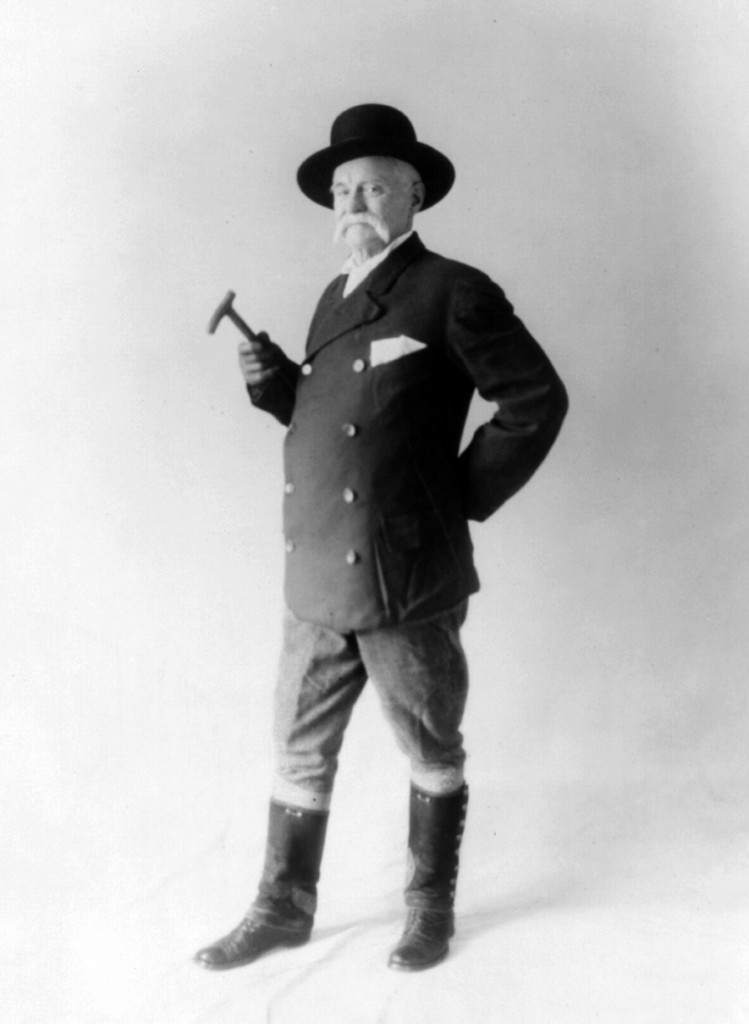The Last Great Walk

Imagine a time when one person could step out of their front door on one coast of America and walk clear across the country. The entire nation consisted of small walkable towns, big walkable cities, and mostly quiet country roads. Where no roads existed, railroad tracks sufficed.
The year was 1909, a time when the street was public space belonging to the man or woman on foot.
Wayne Curtis tells the story of Edward Payson Weston, a septuagenarian who captured the nation’s admiration with a 4,000-mile trek from New York City to San Francisco from mid-March to mid-July of that year.
“When Weston walked to San Francisco, he pretty much had free reign over any street he trod,” Curtis explains. “Not just because he attracted attention and crowds and he and his entourage were often too outsized a presence to be confined to the margins of a narrow sidewalk, but also because anyone on foot could walk just about anywhere they pleased in 1909. That was their right and their habit. Walkers weren’t confined to sidewalks; in cities, they wandered streets as if in a public plaza, crossing midblock or making their way diagonally or rambling in great zig-zags if they felt like it.”
The Last Great Walk is great storytelling woven with analysis of how the geography of America has changed in the last 100 years. Curtis’s prose is vigorous and entertaining, like his subject.
A century later, I wish I could tell you Curtis retraces Weston’s route. That would be a great book, but probably not possible. The misery, punishment, and danger would be intolerable. Curtis walks about 45-40 miles at the most walkable points in New York City and San Francisco and still encounters 12-lane overpasses and trudges too-large intersections.
The nation has become an archipelago of a few walkable cities in vast expanses of highways and arterials roads linking a landscape of shopping malls, big-box stores, subdivisions, and countryside. The nation has sped up and the landscape has become boring—a place to speed through on the way to somewhere else.
Not long after Weston made his journey, the nation embarked on a 20-year battle during which pedestrians lost common law rights that had been in place for centuries. The story is sad and painful, but by 1930 pedestrians were relegated to the sidewalks and automobiles legally owned the streets. That was only the beginning—the real damage came in the half century after World War II when America was remade by traffic engineers and zoning laws. The transformation was gradual, and people accepted it like so many frogs in heating water. Within two or three generations, people forgot that streets ever were public spaces. Although a movement has emerged to reclaim streets for people, this goal may take a century to realize, Curtis explains.
“Low density isn’t a genie you can put back in the bottle. The six-lane arterials flanked with strip malls and fast-food restaurants won’t be walkable until their parking lots are built up with commercial or mixed-use buildings and then the roads themselves are narrowed and rebuilt on a scale more suitable for walking,” he says.
In the meantime, Weston’s travails are entertaining today, much as they riveted the nation in 1909. He planned for the walk to take 100 days—averaging about 40 miles a day. He also greeted crowds in every town and city, gave speeches, and was interviewed by countless reporters. This may have been the most arduous publicity tour in history.
Weston made the mistake of heading west, facing into prevailing winds and storms. He trudged through two feet of snow and was misdirected and badly served by incompetent crews. He eventually walked alone, hungry, and thirsty for vast stretches of the west.
Weston finally made his destination—the San Francisco post office—in good health but five days late.
The Last Great Walk, on the cusp of the nation’s transformation, offers an epic narrative to explore the nexus of walking and geographic change—an issue as relevant today as it was a century earlier.
The Last Great Walk by Wayne Curtis is published by Rodale Press, 2014, $24.99 hardcover, 236 pp.
Robert Steuteville is editor and executive director of Better Cities & Towns.




